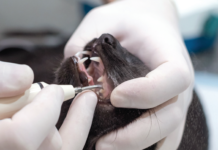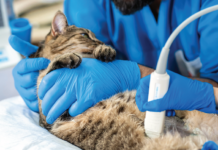Help for Feline Dementia
One study suggests that 80% of all cats from 16 to 20 years of age will show cognitive changes of some type. Feline cognitive...
Handling Medications
It’s a rare household that doesn’t have medicines on hand for different family members and that can result in inadvertent mistakes. For this reason,...
Dentals: Anesthesia Required
Most cat owners get sticker shock when quoted an estimate for a dental cleaning for their cat. Depending on how much your cat needs...
SCC: Early Diagnosis Is Critical
Squamous cell carcinoma (SCC) is one of the most common cancers seen in cats. You may be familiar with the classic form of this...
Genetic Clue for Variable Response to Clopidogrel
Hypertrophic cardiomyopathy (HCM) is a common disease in cats that can cause clots that may result in a potentially life-threatening blockage of blood supply...
Cornell Feline Mammary Cancer Research
Arianna Bartlett, a PhD candidate at the Baker Institute at Cornell University, is studying feline mammary cancer. Mammary cancer is the third most common...
Emergency Decisions
What constitutes an emergency? A collapsed cat? Absolutely. And even more so if she is nonresponsive. Pause only a moment to look for a...
Distilled Water for Kidney
Q. I have two older cats, each with chronic kidney disease. I feed them prescription kidney diets, both wet and dry, and they have...
Living With an FIV-Positive
Feline immunodeficiency virus (FIV) is a retrovirus that infects cats worldwide. Like the human immunodeficiency virus (HIV), FIV suppresses the immune system. For this...
Vestibular Syndrome in Cats
The first time you see a cat battling vestibular syndrome, you may be taken aback. The cat may circle around oddly, fall to one...
Donations Help Save Mika From Cancer
When her owner noticed a lump on Mika’s leg, her veterinarian diagnosed injection-site sarcoma, a cancer. Mika underwent successful surgery to have the lump...
AVMA/EveryCat Award for Viral Research
Dr. Brian Murphy, a professor at the University of California-Davis School of Veterinary Medicine, was recently awarded the American Veterinary Medical Foundation/EveryCat Health Foundation...
















